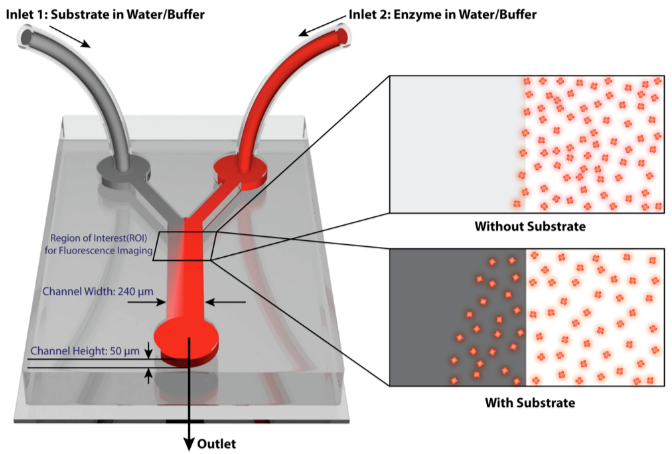‘Intelligent’ micro- and nanomotors based on enzymes discovered
February 1, 2013

A schematic of the microfluidic setup used to study the directed migration of enzymes towards a substrate, which serves as fuel (credit: Samudra Sengupta et al./American Chemical Society)
Two common enzymes, catalase* and urease*, show movement in the presence of their respective substrate (hydrogen peroxide or urea, which act as fuel), Pennsylvania State University researchers Peter J. Butler, Ayusman Sen, and colleagues have found in experiments.
The finding has “important implications in areas ranging from biological transport to the design of ‘intelligent,’ enzyme-powered, autonomous nano- and micromotors, which are expected to find applications in bottom-up assembly of structures, pattern formation, cargo (drug) delivery at specific locations, roving sensors, and related functions,” the researchers note.
More significantly, the movement becomes directional by using a substrate gradient, causing the enzymes to move toward areas of higher substrate concentration,a form of chemotaxis (chemical attraction of living things toward sources of food), similar to the chemotaxis of whole cells.
The researchers also show that movement causes chemically interconnected enzymes to be drawn together; a form of predator-prey behavior at the nanoscale.
Funding is from The Pennsylvania State University Materials Research Science and Engineering Center, supported by the National Science Foundation.
* Enzymes are proteins that jump-start chemical reactions. Catalase protects the body from harmful effects of hydrogen peroxide formed naturally in the course of life. Urease, found in many plants, converts urea to ammonia and carbon dioxide.